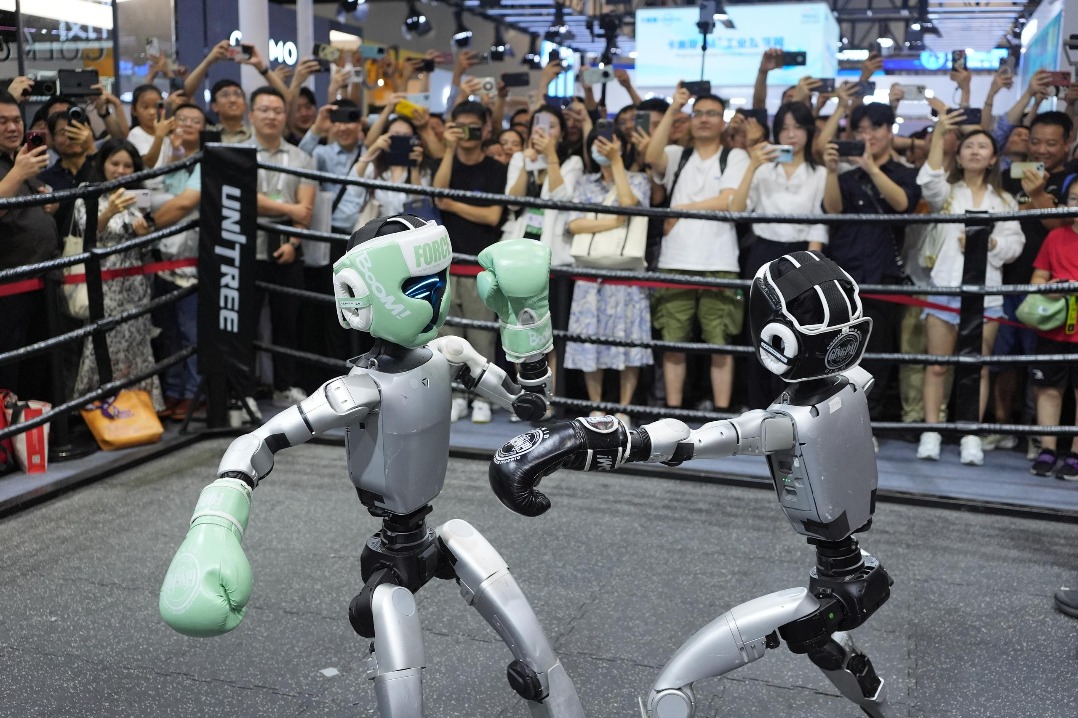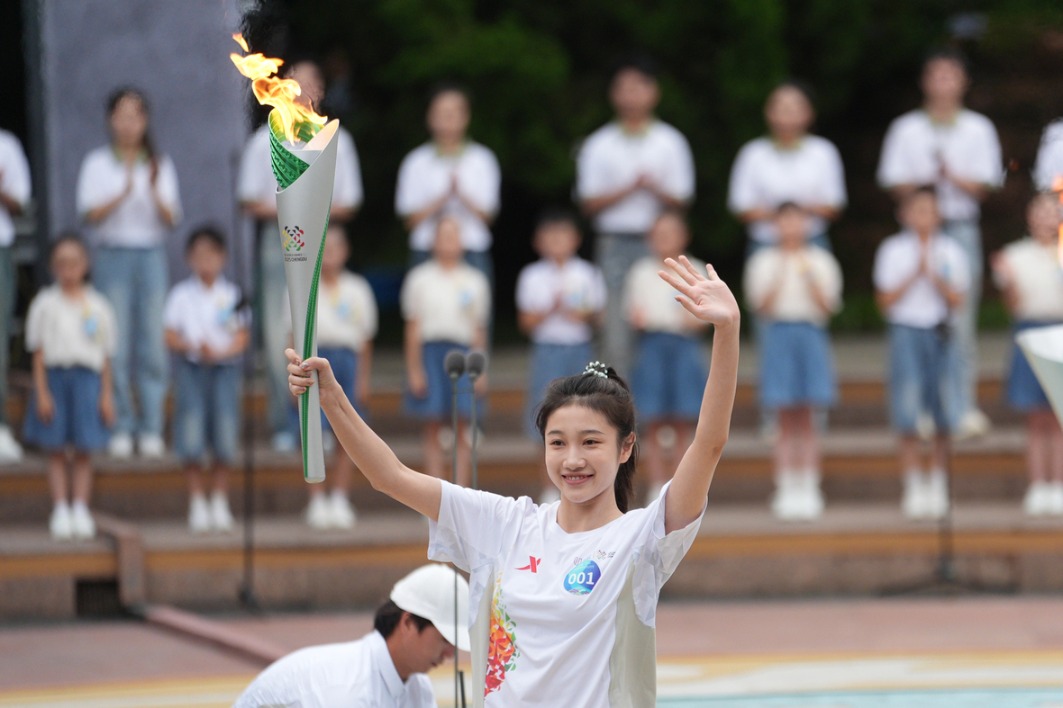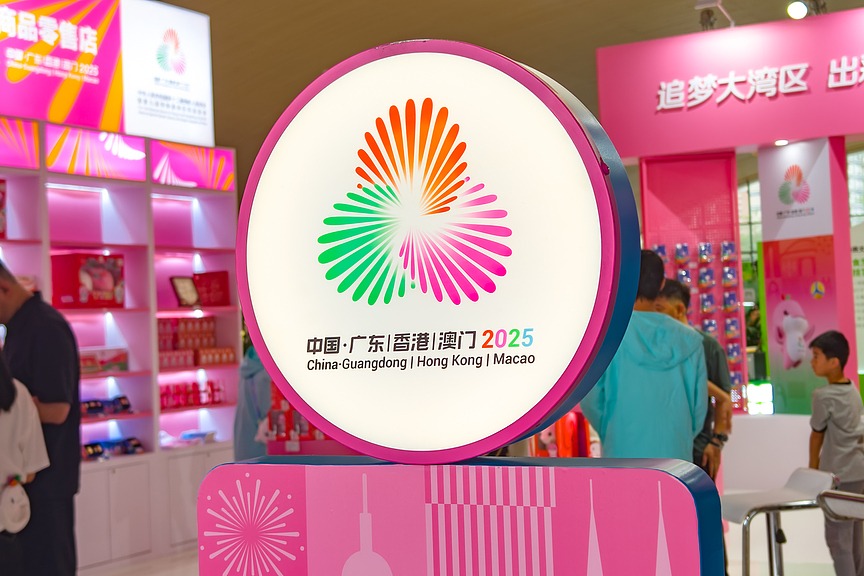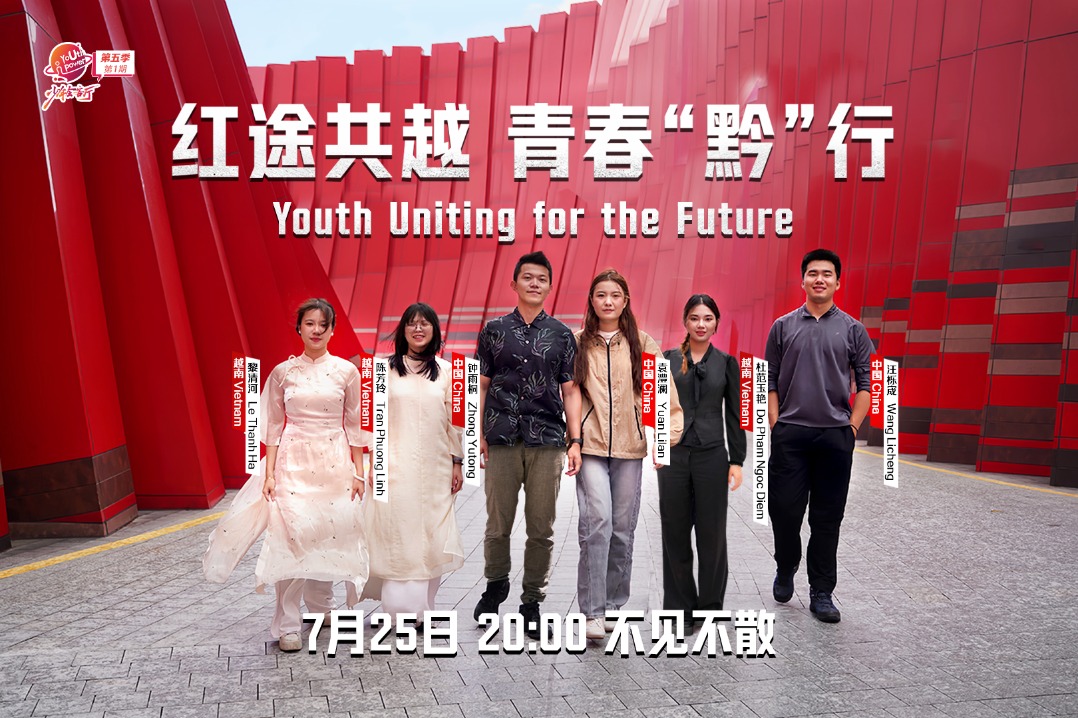Exhibition puts ties in the frame
Artists draw inspiration from China-France relations, Zhang Lei reports.

Long lines of visitors in front of the Guimet Museum, also known as the National Museum of Asian Arts, on Oct 18 in Paris have become a hot topic of conversation on the French capital's art scene.
The lines were for the opening of Kisses from Beijing, an art exhibition celebrating the 10th anniversary of Yishu 8 Maison des Arts in Beijing, which brought together 20 Chinese and French artists and their works as a celebration on Sino-French cultural exchanges. The Chinese Ambassador to France Lu Shaye delivered a video speech to celebrate the opening of the exhibition.
Most of the artists have previously won the Yishu 8 Prize, and have traveled to Beijing or Paris to create their works. The exhibition, jointly curated by Sophie Makariou, director of the Guimet Museum, Henry-Claude Cousseau, president of the Yishu 8 Association, and Christine Cayol, founder of Yishu 8, showcases 25 artworks and 39 postcards specially created by the artists for the occasion.
A column made of bronze, paraffin and silk comes into view as visitors enter the lobby. The sculpture Colonne du 21.03.2011 by French artist Lionel Sabatte attests to Yishu 8's mission as a unique platform for Franco-Chinese creation and influence.
In 2011, Sabatte won the first Yishu 8 Prize.
"Yishu 8 is not only like a 10-year-old boy, full of vigor and energy, but also a key that helps Chinese and French artists and art lovers to open up the door to understand the mysterious culture thousands of miles away," says Cayol, founder of the association.
Upon the stairs of the museum hall, a dynamic blue "wind ball" appears on top of the white wall. Inspired by skylights, Chinese artist Wang Enlai, winner of the 2015 Yishu 8 Prize, hopes to introduce the blue sky, flowing air and natural sound into the museum through this installation.
As much as they arouse curiosity, the two artworks serve not as mere aperitifs, but a prelude to the exhibition hall on the second floor where the story of Yishu 8 unfolds.
As the prologue of the exhibition Kisses from Beijing, Yishu 8 presents the artistic journey of the past 10 years through texts, pictures, videos and books. Every smiling face on the exhibition wall, every glimpse of the artists' lives in Beijing or Paris captured on video, and all the foldouts and annual albums presented in the same style encapsulate the strength of Sino-French art relations.
"This exhibition is sharing a deep feeling with the public: the importance of mutual understanding and cross-inspiration between China and France. We have been promoting artistic exchanges for 10 years and are still engaged in this mission. We believe that art is the key to understanding a foreign civilization," Cayol says.
In 2009, Cayol and Xue Yunda, secretary-general of the Beijing Design Society, co-founded the nonprofit association. In 2019, Yishu 8 and the China Soong Ching Ling Foundation Golden Phoenix Art and Science Fund co-founded the Hand of Wisdom — Golden Phoenix Yishu 8 Chinese Youth Crafts Program.
Over the years, they have used the former site of the Beijing Sino-French University as its base to help and support young artists in China and France through the art residency program. They regularly hold art exhibitions, cultural lectures, concerts and forums to convey the spirit and belief of equality and fraternity of the former Sino-French University, and strive to build a bridge for the exchange of culture and art between the East and the West. The university was founded in 1920.
A total of 39 Chinese and French artists have been selected for the Yishu 8 Prize over the past 10 years, which supported them in finding different artistic inspiration in both countries. Before the opening of the exhibition, Wang and Peng Yong, winner of the 2014 Yishu 8 Prize, resided in the Cite Internationale des Arts in Paris, and created and exhibited works at the Paris Yishu 8 Maison and the New Sino-French University in Lyon.
"In this exhibition, we present 13 French artists and seven Chinese artists who are all Yishu 8 awarded. Those French artists have had the opportunity to come to Yishu 8 in Beijing for a three-month residency program, and the Chinese artists have had the opportunity to come to France to discover Paris and our culture," Cayol says.
"Totally we have selected 20 artists using different languages: photo, video, painting, conceptual art, installation and sculpture. …The French have been inspired by China and by their experience with Chinese people. The Chinese have discovered French culture. This action is fostering creativity and an open-minded attitude. We need this kind of openness, especially in a very complex worldwide context today."
Dialogue through time
The Guimet Museum has one of the world's richest collections of Asian art, and its Chinese section contains about 20,000 artworks, covering art from the origins of its civilization to around the 18th century. This time, the museum opened its cabinets and invited the artists to start a dialogue through time and space with these precious collections.
The 20 participating artists use their creativity and artistic language to paint the bridge between Western contemporary art and Chinese tradition.
The art piece 3,000 Quiddities Inherently Entailed in Each Moment of Experience NO 70-3 is Peng's first-time tryout on a round pottery plate.
"The creation style is the same as other works in the same series, with brushstrokes repeated until the disc is filled," Peng says.
"I paid special attention to the painting process, let myself be in a state of relaxation and concentration, and strived to make myself feel every moment clearly, just like the self-cultivation of a monk. When I first conceived of the disc, I wanted to bring out its morphological characteristics. In the past, I used a quadrilateral frame to create the work, and the strokes were all oriented in one direction, whereas in a round shape, it radiates from the center to the surrounding. The final effect of blue is like an eye or a black hole, adding more mystery. Its color and shape exceed my expectations and bring more imagination to the audience."
Within the rooms of the Chinese ceramic collection, Yishu 8 Prize winners were invited to choose an object "in resonance" with their approach, then to write postcards to other artists in which through a few sentences or a pictorial gesture reveals the way in which this object "speaks today" to the artist.
On these 39 postcards, some artists focus on painting, some "experiment" on postcards, and some simply abandon the original paper and start new creations. The Guimet Museum displays these postcards and their corresponding cultural relics side by side.
Peng, with his signature fluorescent colors and lines, presents the elegant color and luster of yellowglazed porcelain in the Hongzhi period of the Ming Dynasty (1368-1644).
"I chose the yellow and blue porcelains, using the same radiating lines. I only used a very light color to outline the central object, but the lines were replaced with the color of the objects, which is also a metaphor for the fragility of cultural relics. Its light will eventually dissipate in the vast river of history, and the color will also recede," he says.
"We often say that Yishu 8 is like a big family, growing together in mutual love. The prize is like the starting point of my art. It has given me a lot of opportunities to make my artistic path smoother. After winning the prize, I had a solo exhibition in Beijing in 2014; in 2015, I had a residency exchange in Paris. I hope to have better development in the future, benefit more young artists from China and France, and promote the cultural exchanges."
Claire Tabouret, the 2012 Yishu 8 Prize winner, with her delicate brushstrokes and colors, makes the silverware of the Liao Dynasty (916-1125) alive on paper.
Wang, winner of the 2015 prize, uses soap and resin to pay tribute to the celadon of the Longquan kiln of the Southern Song Dynasty (1127-1279).
In the main hall, in addition to Sabatte's monumental sculpture and Wang's installation, the video artwork Hai Gongzi took Geng Xue, the 2016 prize winner, a year to finish the filming of how the figurines and props are made in ceramics.
Against a backdrop of the ancient ceramics in the exhibition hall, the video work has injected new life into the relics.
The neoclassical Heidelbach Hotel, an annex of the Guimet Museum, serves as the main exhibition hall for the artists of Yishu 8. Jennifer Douzenel, the 2013 prize winner, who has also worked as the designer of the exhibition, separates the space with a velvet column area, and adds mysterious lighting to create a field of exploration, similar to the layout concept of Chinese gardens that capture limitless beauty on moving steps.
She has created a unique and undisturbed exhibition and viewing space for each artist and each artwork.
Visitors can see a corner of the work from a distance, and when they get closer, it gets more mysterious, until finally they are completely immersed in the artist's world.
The sculpture Versant by the 2018 prize winner Flavie L.T. is placed in the courtyard to take the audience on a tour of Chinese philosophy of a celestial landscape.
Sculpture fraiche by the 2017 prize winner Guillaume Talbi is like the rockery in Chinese gardens, with different perspectives for multifaceted viewing.
The exhibition hall on the first floor presents 19 paintings, sculptures, installations and video works, including artist Li Xin's oil painting 20210919H on canvas.
The 2018 winner Ouyang Sulong's 3D-printed painting Broken Shadow Series is the center of attention; the 2019 winner Cai Yaling's embroidery work on photo Me in 1987 brings a rare feeling of intimacy; and Lyes Hammadouche exhibits his whimsical installation Law, showcasing the flow of light and time.
Creative influence
Nathanaelle Herbelin, the 2019 prize winner, worked in Beijing from November 2019 to January 2020. Living in a hutong, she turned the daily life of Beijing into her own creative inspiration.
"During my stay, I had the honor and chance to meet Liu Xiaodong in his studio. I am still amazed by his capacity and talent to paint subjects on such a big scale, based on his observations only. This encounter will remain a big source of inspiration," she says.
"Since COVID-19 many people are longing for human interaction, a longing that is still somehow not fully compensated … I am happy to see the art world blossoming again. … I was even afraid that international physical exchanges would be much rarer.
"I am glad to be able to host people in my studio again, as they constitute a big part of my portrait practice. Hosting others' energies in my studio deeply influences my creation."
Her painting His Room is on show at Guimet Museum.
Cayol says: "In Herbelin's world, everything you can see can be painted. Her paintings invite us, but they block us at the entrance, in stillness. China will never let people see at a glance. The same is true of her paintings.
"Painting is a way of fighting against the demons in your heart, and it is a paradise that you try to keep. Maybe you can immerse your own world into the canvas, and it can become an independent world, radiating the magnetic field, illusory and unreal, subject to the changing rhythm of light and brush."
For Cayol, tradition is the key to being able to innovate.
"You need to know where you come from," she says. "The Yishu 8 artists have in common this sense of heritage and a particular sense of beauty. Beauty and poetry don't come from nowhere, but from heritage. They respect tradition and, for this reason, they are so innovative. It is like a family, you need to respect your grandfather and grandmother, in order to be able to build your own and original life."
The exhibition is set to run through Feb 27.
The author is a freelance writer.






































